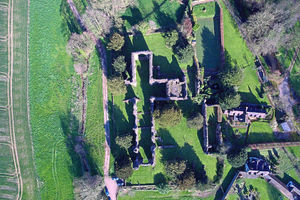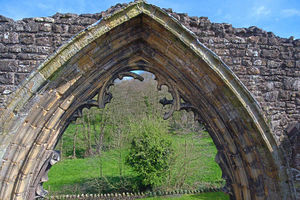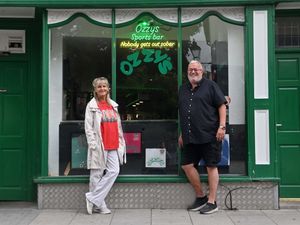Drone captures new view of Lilleshall Abbey ruins - photo gallery
[gallery] Lilleshall Abbey may be in ruins but as these amazing images show the 12th century monastery is a wonderful sight to behold from the air.
These images were snapped by drone enthusiast Steve Taylor, who was visiting relatives in the area when he took a trip to the site which is now a tourist attraction operated by English Heritage.
He used a Phantom 4 drone to capture the pictures of the Augustinian abbey, which was founded between 1145 and 1148 under a charter from King Stephen. The earliest occupants followed the austere practises of the Abbey of Arrouaise in France.

Mr Taylor, an IT manager of Exeter, Devon, called at the historic landmark and was taken aback by the details picked out by the drone's camera. The central nave and its transept or cross aisle can clearly be seen in the photograph.
He said: "I think that it is amazing that you can see the whole site which apart from the roof is still fully intact. I was also amazed by the amount of people who were visiting the site. It's really tucked away in the middle of Shropshire.
"I was standing in Abbey Lane nearby and the drone got to a height of just under the 400-ft limit at the point where I took the image of the nave and the transept. The drone didn't go any higher than just above the height of the abbey's roof line.
"I think people should be sensitive to old buildings when using them and follow the drone code.
"If used carefully they can get some really good images of historic sites like this one.
"I was visiting relatives in Muxton when I stopped by. It was a lovely sunny day and it's a very pretty place too."
To see more of Steve's pictures visit him on Instagram @tailsjt.

The sandstone abbey became a private residence after the Reformation period and was severely damaged during the English Civil War during a Parliamentarian siege.
But despite that, much of the church survives, including a lavishly sculpted processional door and other cloister buildings.
During the 18th century a canal was cut through the abbey precinct.
The remains were placed in state care in 1950, and later repaired, consolidated and then placed under the care of English Heritage.
Today the abbey is ideal for picnics or short walks and is open daily from 10am to 6pm April to October, and 10am to 4pm November to March.
English Heritage cares for more than 400 historic buildings, monuments and places.





